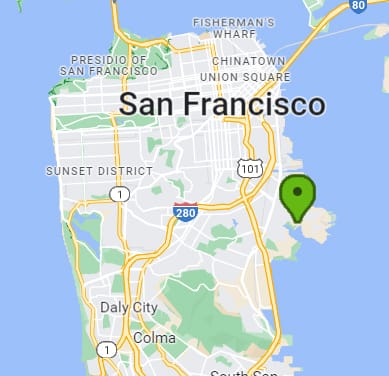
Introduction
San Francisco, renowned for its progressive stance on environmental issues, is a city that values sustainability. Moving, however, is an activity often associated with waste and high energy consumption. For those relocating in or to San Francisco, adopting eco-friendly moving practices aligns with the city’s green ethos and helps reduce the environmental impact. This guide will provide you with tips and strategies to ensure your move is as sustainable as possible.
Why Eco-Friendly Moving Matters
Moving typically involves a significant amount of waste, from discarded items to single-use packing materials. According to the Environmental Protection Agency (EPA), Americans generate millions of tons of waste each year, much of which comes from household relocations. By making eco-friendly choices, you can help minimize waste, reduce carbon emissions, and promote sustainable living practices.
Planning Your Eco-Friendly Move
Declutter and Donate
One of the first steps to an eco-friendly move is reducing the number of items you need to transport.
- Sort and Declutter:
- Go through each room and sort your belongings. Decide what to keep, donate, sell, or recycle.
- According to the EPA, reducing waste at the source is the most effective way to manage waste.
- Donate Unwanted Items:
- Consider donating gently used items to local charities, shelters, or non-profits. Organizations like Goodwill, The Salvation Army, and Habitat for Humanity accept a wide range of household goods.
- Donating items not only helps those in need but also keeps usable goods out of landfills.
- Recycle and Dispose Responsibly:
- Recycle items that cannot be donated, such as old electronics, batteries, and paper products. Check local recycling guidelines to ensure proper disposal.
- For items that must be discarded, dispose of them responsibly to minimize environmental harm.
Using Sustainable Packing Materials
Eco-Friendly Packing Supplies
The materials you use for packing can significantly impact the environmental footprint of your move.
- Recycled and Reusable Boxes:
- Use boxes made from recycled materials or seek out second-hand boxes from local businesses or online marketplaces like Craigslist and Freecycle.
- Many moving companies now offer rentable plastic moving boxes, which can be used multiple times and then returned.
- Biodegradable Packing Materials:
- Replace traditional bubble wrap and packing peanuts with biodegradable alternatives. Materials such as cornstarch peanuts, recycled paper, and mushroom-based packaging are excellent eco-friendly options.
- Use towels, blankets, and clothing to wrap and cushion fragile items, reducing the need for additional packing materials.
- Minimalist Packing:
- Pack items efficiently to maximize space and reduce the number of boxes needed. Use smaller items to fill gaps in boxes and avoid using excessive padding.
- Label and Reuse:
- Clearly label boxes with their contents and the room they belong to. This not only makes unpacking easier but also allows you to reuse boxes more effectively for future moves or storage.
Hiring an Eco-Friendly Moving Company
Choosing the Right Movers
Selecting a moving company that prioritizes sustainability is a crucial step in making your move eco-friendly.
- Research Eco-Friendly Movers:
- Look for moving companies that have a commitment to green practices. Check their websites for information on their sustainability policies and practices.
- Companies like Pedro’s Moving Services offer eco-friendly moving options, including the use of biodiesel trucks and recyclable packing materials.
- Ask About Green Practices:
- When obtaining quotes, ask moving companies about their environmental practices. Inquire about their use of fuel-efficient vehicles, recycling programs, and any green certifications they may hold.
- The American Moving and Storage Association (AMSA) provides resources to help consumers find eco-friendly moving companies.
- Get Multiple Quotes:
- Compare quotes from several eco-friendly moving companies to find the best service and price. Ensure that the quotes include all services and fees, and that there are no hidden costs.
Reducing Carbon Footprint During the Move
Efficient Transportation
Transportation is a major contributor to the carbon footprint of a move. Here are some strategies to minimize the environmental impact of transporting your belongings.
- Optimize Moving Trips:
- Plan your move to minimize the number of trips needed. A larger truck that can carry all your belongings in one trip is more efficient than multiple smaller trips.
- If possible, combine your move with other errands or activities to make the most of each trip.
- Use Fuel-Efficient Vehicles:
- Choose a moving company that uses fuel-efficient or alternative fuel vehicles. Biodiesel trucks, electric vehicles, and hybrid options are increasingly available and significantly reduce emissions.
- If you’re renting a truck, opt for a fuel-efficient model and drive at a steady speed to maximize fuel efficiency.
- Offset Carbon Emissions:
- Consider purchasing carbon offsets to neutralize the emissions from your move. Companies like TerraPass and Carbonfund.org offer programs that support renewable energy projects and carbon reduction initiatives.
Sustainable Practices in Your New Home
Setting Up an Eco-Friendly Home
Once you arrive in San Francisco, continue your commitment to sustainability by setting up an eco-friendly home.
- Energy Efficiency:
- Install energy-efficient appliances and lighting in your new home. Look for ENERGY STAR-rated products, which use less energy and reduce utility bills.
- Implement simple practices such as using programmable thermostats, sealing windows and doors, and using ceiling fans to reduce energy consumption.
- Water Conservation:
- Install low-flow fixtures and appliances to conserve water. San Francisco offers rebates for water-saving devices such as high-efficiency toilets and irrigation controllers.
- Practice water-saving habits like fixing leaks promptly, using mulch in gardens, and collecting rainwater for outdoor use.
- Waste Reduction:
- Set up a recycling system in your new home to ensure that recyclable materials are properly sorted and disposed of. San Francisco provides comprehensive recycling services, including curbside pickup for recyclables and compost.
- Consider starting a compost bin for food scraps and yard waste. Composting reduces landfill waste and creates nutrient-rich soil for gardening.
- Support Local and Sustainable:
- Support local businesses and farmers by shopping at farmers’ markets and choosing products with minimal packaging. The Ferry Plaza Farmers Market offers a variety of local, organic produce and goods.
- Look for sustainable and ethically sourced products for your home, from furniture to cleaning supplies.
Community Involvement
Engaging in Local Sustainability Initiatives
San Francisco is a community that values sustainability and environmental stewardship. Get involved in local initiatives to make a positive impact.
- Join Local Green Groups:
- Join local environmental organizations and groups such as the Sierra Club and the San Francisco Green Party, which work towards sustainability and environmental protection in the area.
- Participate in community clean-up events, tree planting, and other volunteer opportunities to contribute to the local environment.
- Attend Workshops and Events:
- Attend workshops and events focused on sustainability, energy efficiency, and environmental conservation. The City of San Francisco often hosts events and provides resources to educate residents on green practices.
- Engage with community members and local leaders to stay informed about sustainability initiatives and policies in San Francisco.
- Advocate for Green Policies:
- Support and advocate for local policies and initiatives that promote sustainability. Attend city council meetings and voice your support for green projects and regulations.
- Encourage neighbors and friends to adopt eco-friendly practices and participate in community efforts to create a greener San Francisco.
Conclusion
Making your move to San Francisco eco-friendly requires careful planning and a commitment to sustainability. By decluttering and donating items, using sustainable packing materials, hiring an eco-friendly moving company, and setting up a green home, you can significantly reduce the environmental impact of your move. Additionally, engaging in local sustainability initiatives and supporting green policies will help you contribute to a more sustainable community. At Pedro’s Moving Services, we are dedicated to providing eco-friendly moving services to help you transition seamlessly into your new home. Contact us today to schedule your move and experience a hassle-free, environmentally conscious relocation.
References
- Environmental Protection Agency (EPA)
- American Moving and Storage Association (AMSA)
- TerraPass
- City of San Francisco Recycling Services
- Ferry Plaza Farmers Market
- Sierra Club
- San Francisco Green Party
These resources provide additional information and insights into making your move and lifestyle in San Francisco more sustainable.



